Around Town
-
It was not surprising to find this familiar logo on a store front in Barcelona’s busiest square, Plaça de Catalunya:
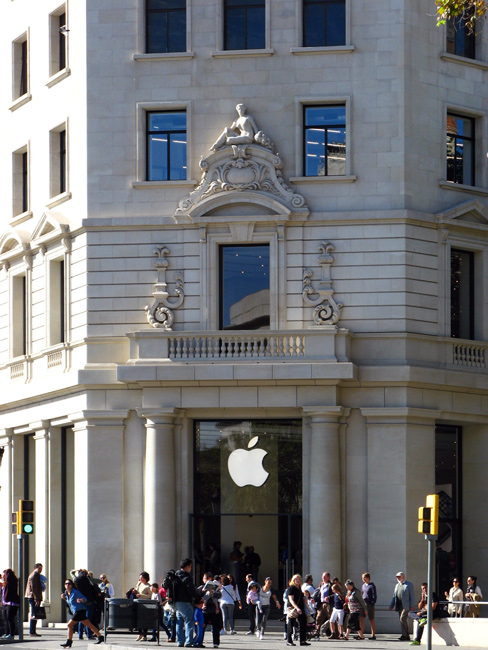
The Apple Store occupies three levels of the building and employs some 300 locals. It opened in July 2012 at the prestigious address No. 1 Passeig de Gràcia. We wandered in and found it plenty busy on this Saturday morning:
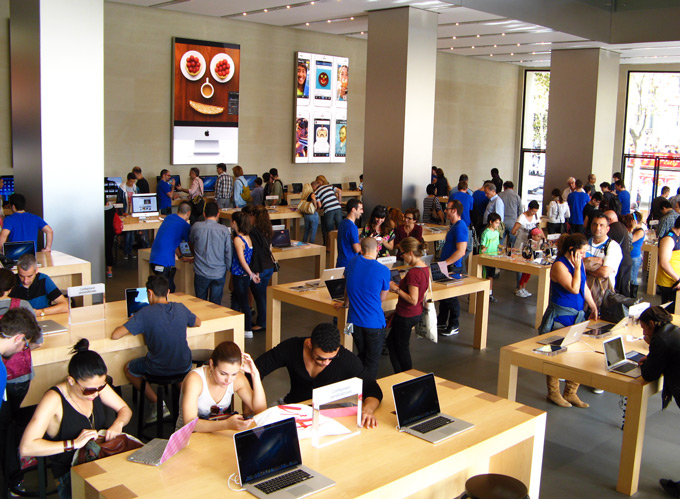
Just across the square is the upper end of Las Ramblas, the most famous street in the city:
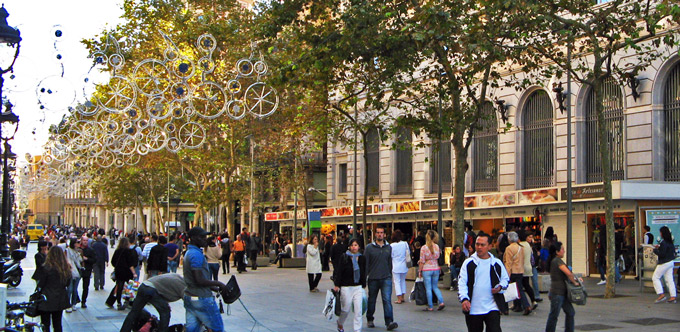
Holiday decorations were already in place.
A few blocks down Las Ramblas and about one to the east are these tombs, a fascinating reminder of the Roman empire’s presence here: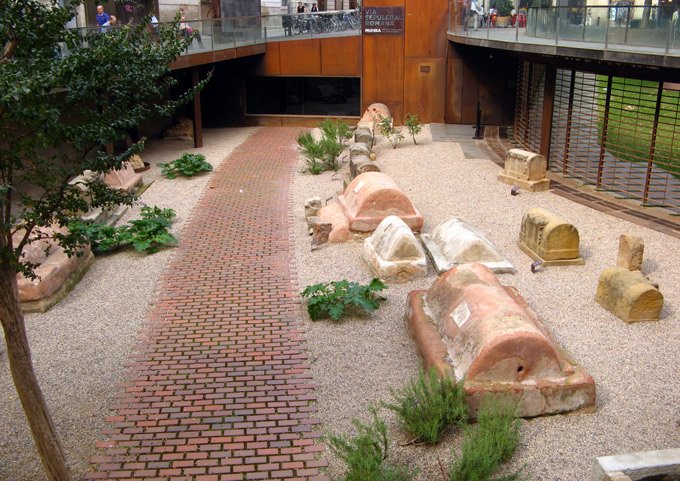
Tombs typically lined the road into town --- in this case, into the Roman port of Barcino. The street level here in old Barcino was about 10 feet lower than it is today.
Farther to the east in the heart of Barcelona is the city’s Gothic cathedral, named after the city’s patron saint, Eulalia:
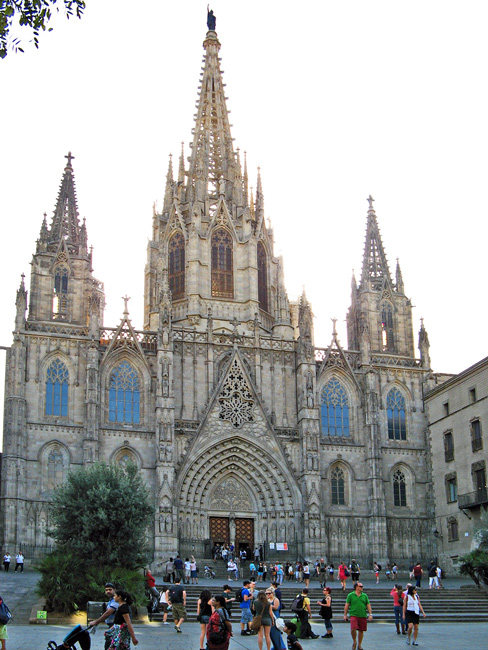
Construction on this edifice began in 1298 and finished in 1450, except for more modern updates and embellishments. The neo-Gothic style facade, for example, was a 19th century improvement:
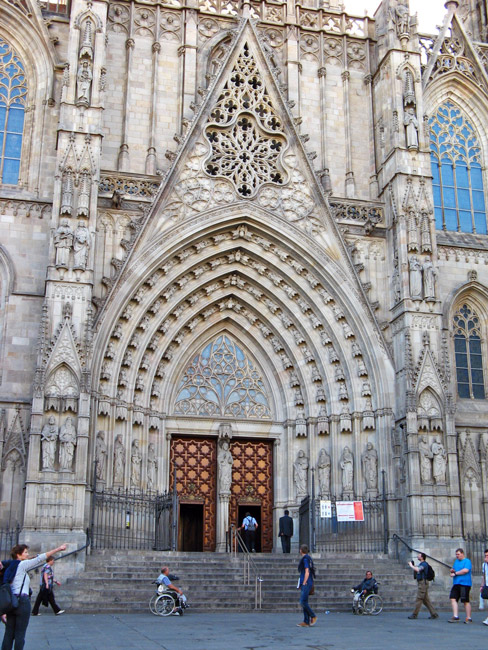
The spacious nave is some 300 feet long and ringed with 28 side chapels:
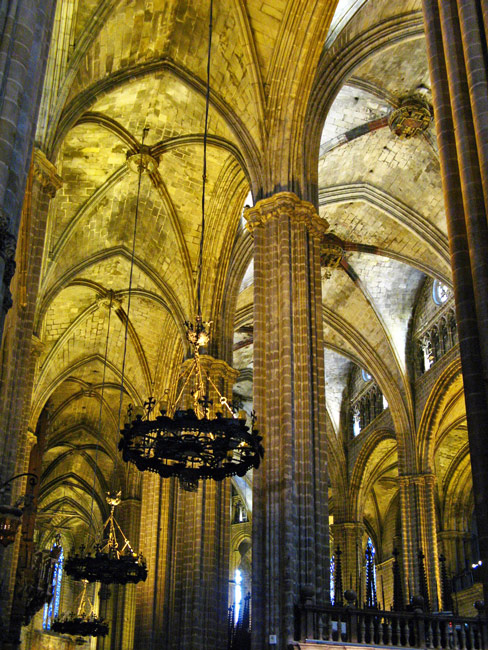
There is also an interesting baptismal font that was carved from marble in 1433. It is said to be the place of baptism of the six Indians brought back by Columbus from the New World in 1493:
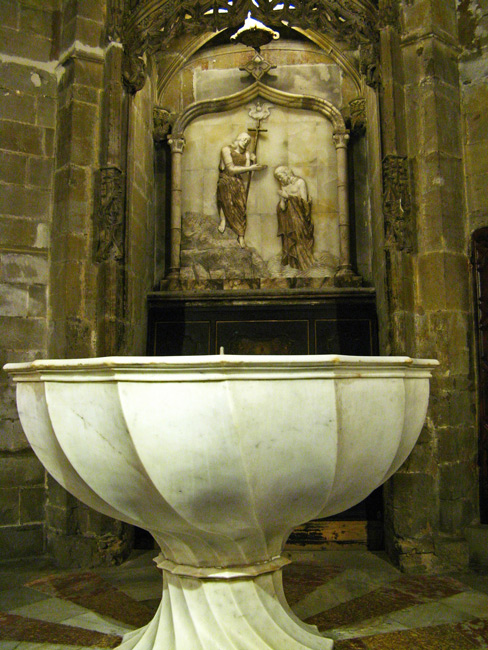
The cathedral is famous for its 14th century cloister, which draws sightseers like a magnet. Architecture is not the main reason, though; geese are:
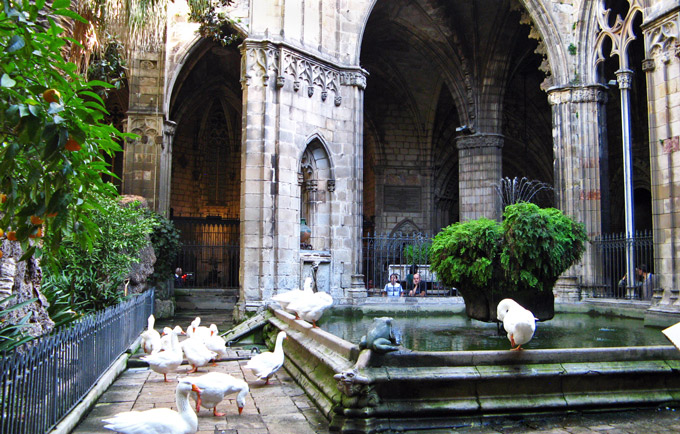
There are always 13 geese in the courtyard. Each goose represents one year in the life of Saint Eulalia, a young girl martyred for her religion in the 4th century.
Leaving the cathedral, we wandered the narrow streets of the Gothic Quarter, known commonly as Barri Gòtic:
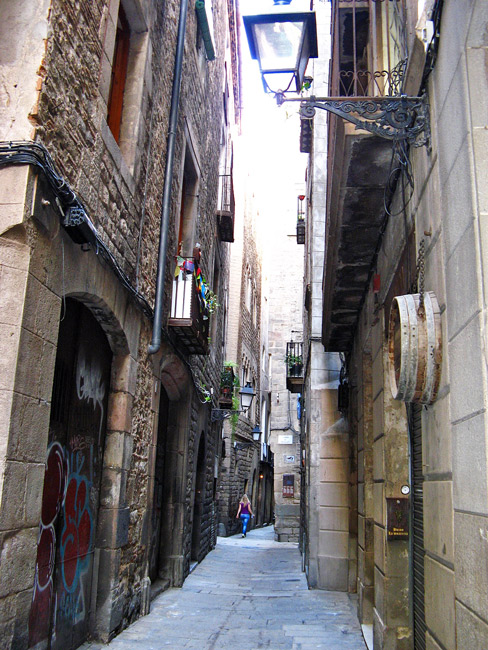
Besides the cathedral, this section of Barcelona harbors some rich historical sights. One example is this collection of Roman columns:
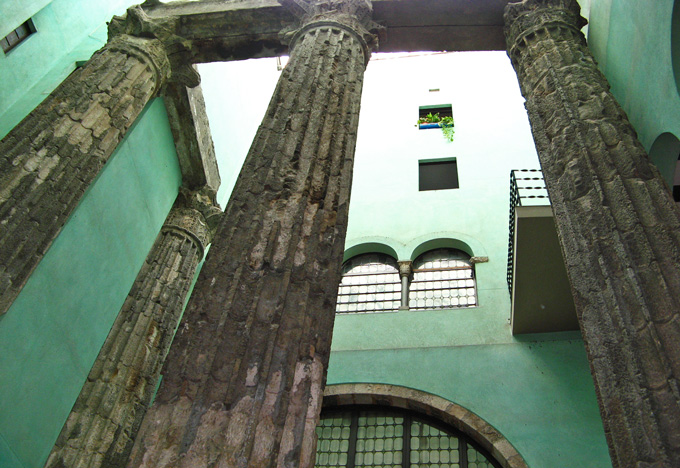
These four columns from the Temple of Augustus are more than 2,000 years old, like Barcelona itself. The medieval courtyard that envelopes them may have been the key to their survival.
Barcelona’s main synagogue during the Middle Ages is open for visitors --- at least, its subterranean level is:
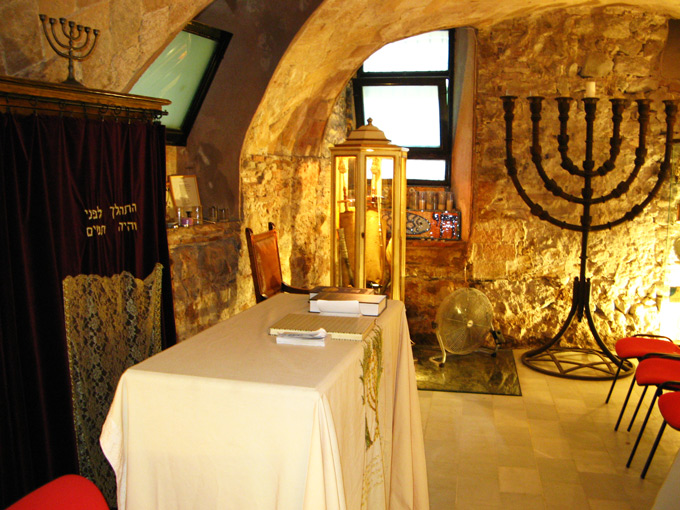
The rest of the building has long since been converted to other uses. This synagogue is claimed to predate any other --- not just in Spain --- but in all of Europe!
At the Barcelona History Museum the main attraction is sixty-five feet below the lobby level. There, visitors can practically walk the streets of Roman Barcino:
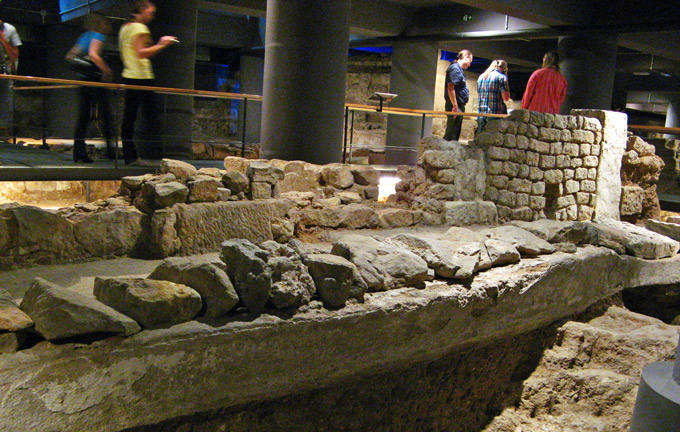
The ruins that have been excavated once comprised a working-class part of town:
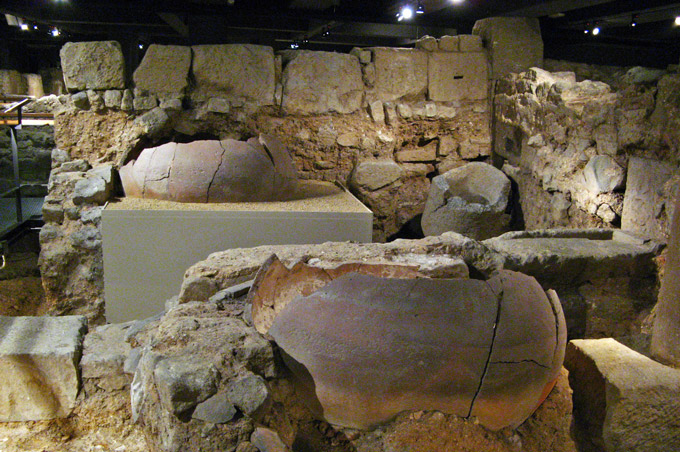
Archeologists have identified a factory that processed fish and created a fish-derived sauce called “garum” (widely used in ancient Roman cooking), as well as facilities for making wine, for dyeing, and for doing laundry:
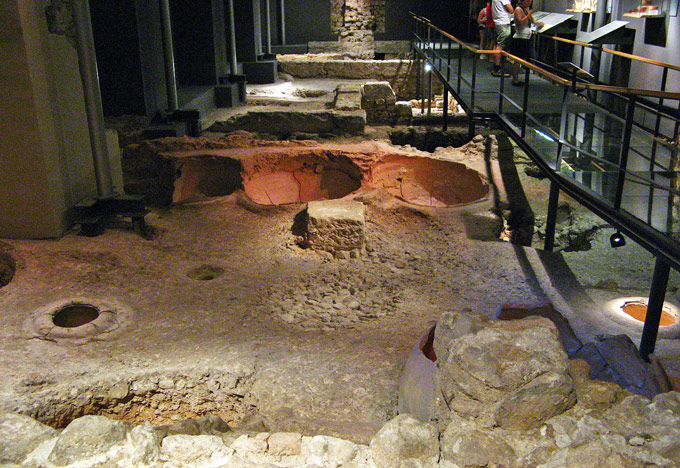
The ruins were discovered during excavations to build new foundations for the nearby Plaça del Rei. To better preserve the remains, the Barcelona History Museum was moved to the site and the museum opened there in 1973.
With fewer tourists, the Santa Caterina Market is much quieter than its more widely known competitor on Las Ramblas:
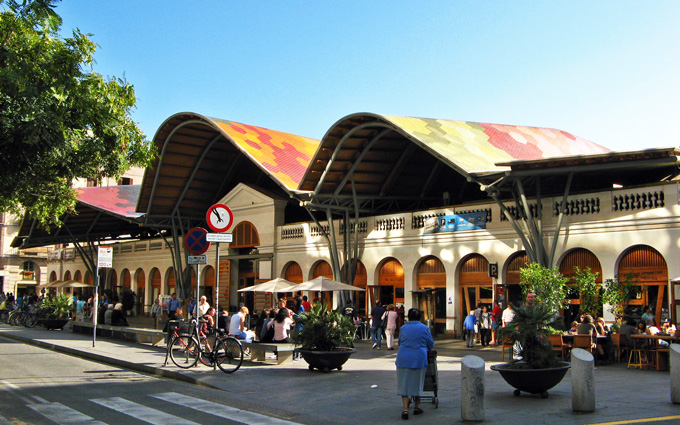
Built on the site of an old monastery, it has been updated with a Gaudi-inspired roof that is both wavy and colorful.
The design of Barcelona’s Estacio del Nord pleases the eye, we thought:
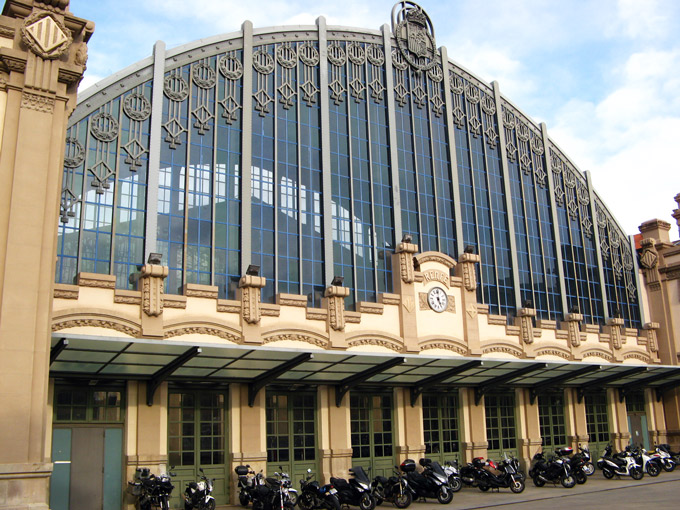
This is the bus station from which we traveled to Tossa de Mar.
Only a few blocks away is Barcelona’s Arc de Triomf:
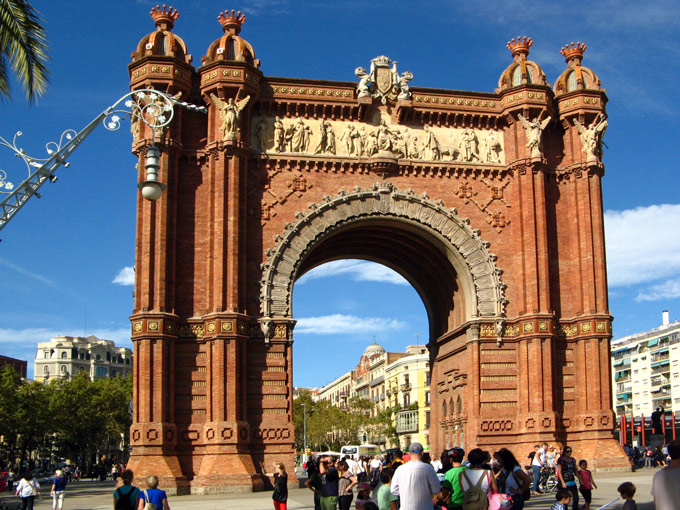
The arch was built as the main access gate for the 1888 Barcelona World’s Fair.
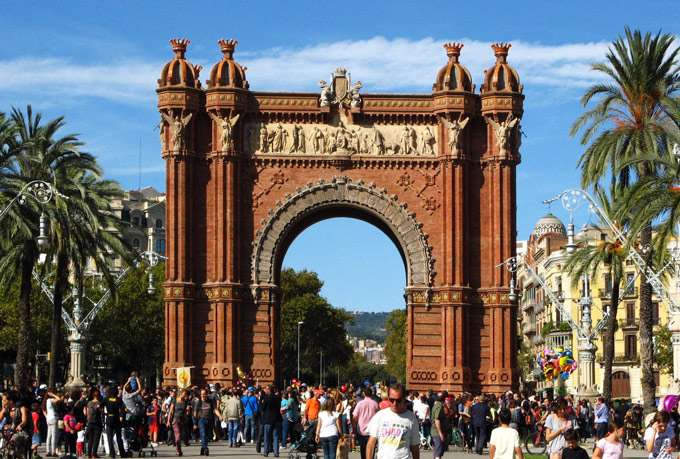
We never did figure out what the gathering was about but it was peaceful. This was the Sunday before Halloween, a beautiful day, and many families were out. Our guess is that a Halloween costume event was taking place.
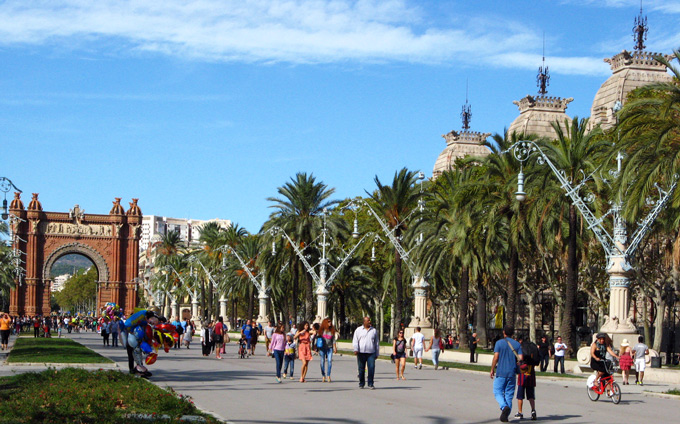
The arch presides over a wide promenade that leads into Ciutadella Park.
Once the location of an unpopular military citadel, this area was transformed into Ciutadella Park for the 1888 World’s Fair. Today, within its boundaries, the park has an abundance of grass and trees, wide pathways, two museums, a zoo and even the Parliament of Catalunya. A stroll through the park on a sunny day would reveal many walkers and joggers, picnicers, boaters on the lake, bike riders, and, perhaps, a Segway tour group.
The park’s most flamboyant structure is this ornamental fountain:
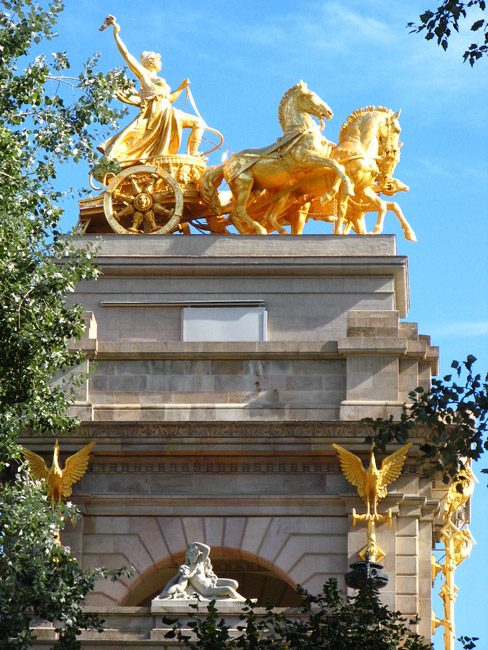
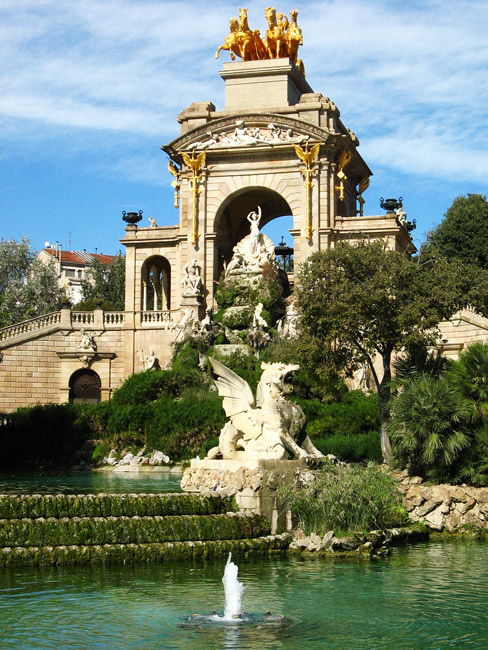
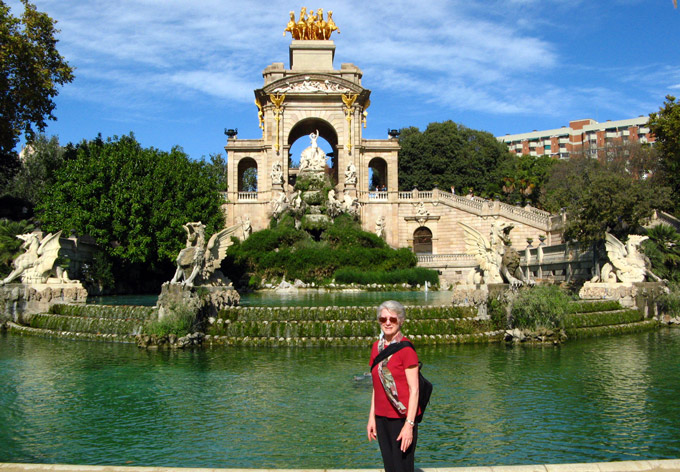
The architect intended it to bear a resemblance to the Trevi Fountain in Rome. Did he succeed?
At the foot of Las Ramblas, the well-known statue of Columbus pointing out to sea was also constructed for the 1888 World’s Fair:
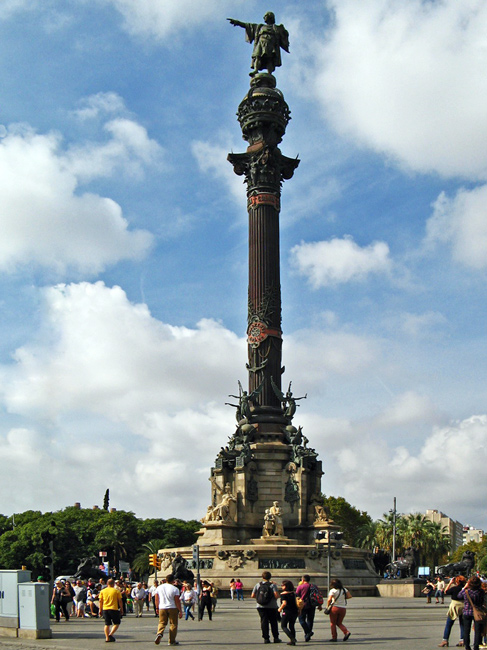
It commemorates Columbus’ stop in Barcelona following his first voyage of discovery.
Nearby, at the waterfront, boat-watching is a popular pastime ...
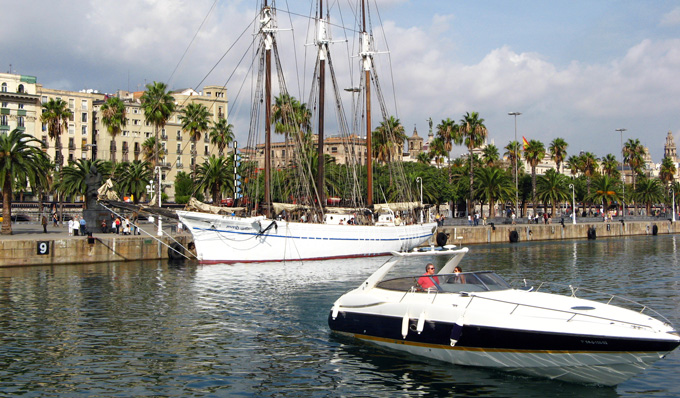
... but some vessels can only be found in the Maritime Museum, such as this beauty:
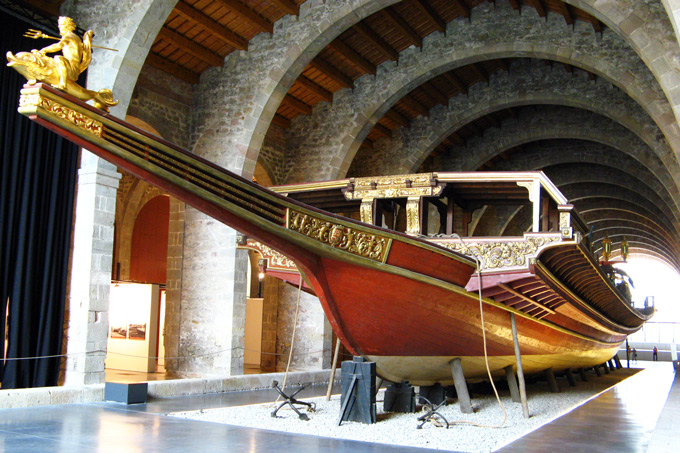
This is a replica of the flagship for the Christian allied forces at the Battle of Lepanto in 1571. The Royal Galley was 180 feet long by 19 feet wide and had 59 oars, mostly manned by slaves. The Galley’s aft end was surely built to impress:
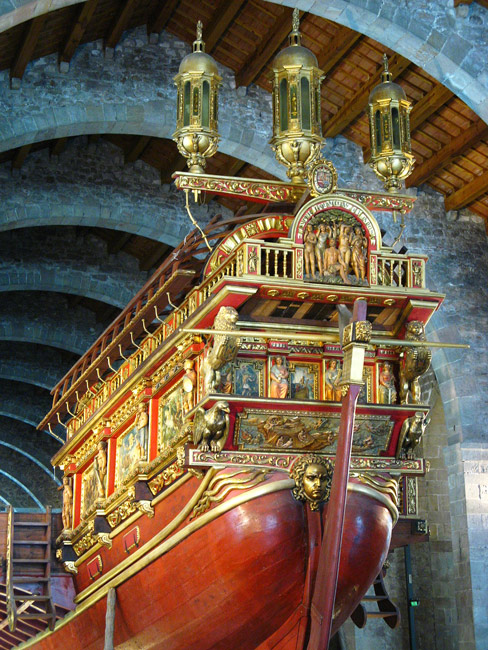
Nowadays, the ship and these restored dockyards are the perfect backdrop for nautical accouterments:
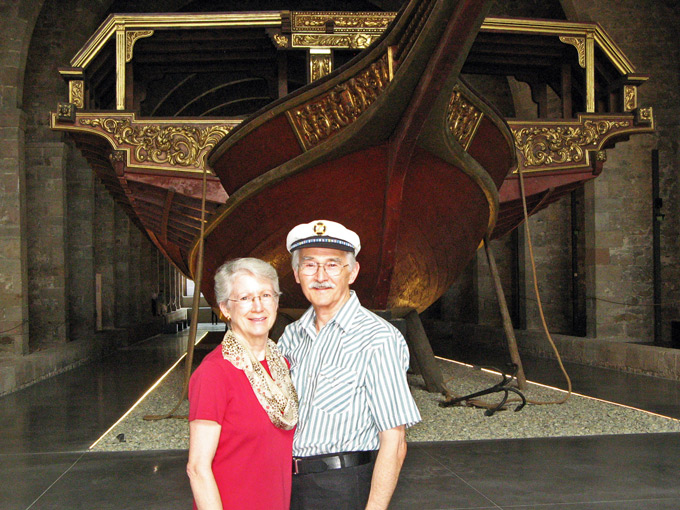
On another fine day, we took a bus to the top of Montjuic, a large hill that overlooks much of the city and its port. On top is a fortress built by the central Spanish government in the 18th century to control Barcelona and stifle citizen revolt:
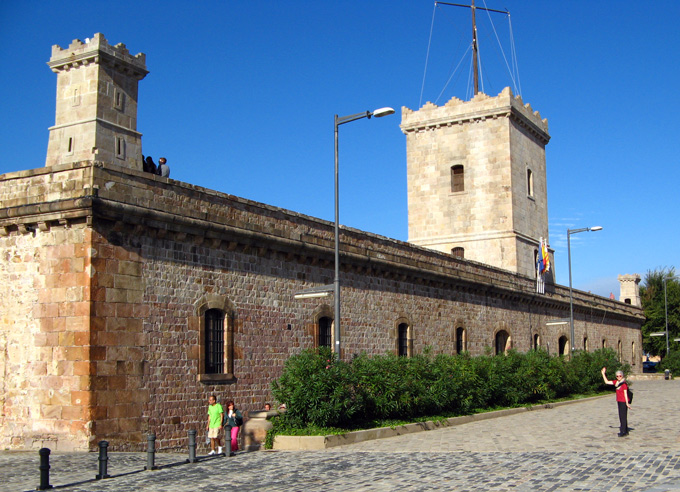
Under dictator Franco, in fact, hundreds of political executions took place within its walls. Today, it is under Barcelona’s control and merely a shell of its former self. It is a quiet place with splendid views over the harbor:
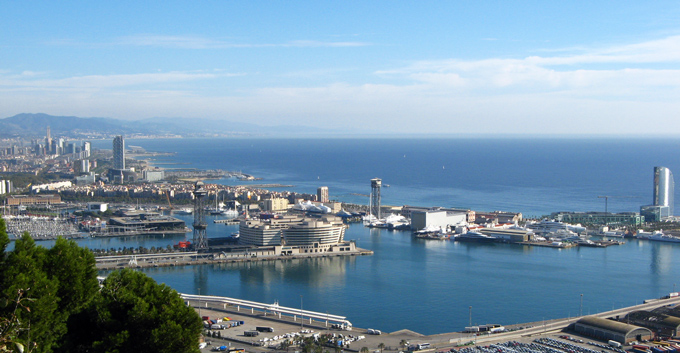
In the photo below, the two tall towers support the cable car that connects Montjuic with the port. Between them (more or less) is the World Trade Center and a hotel:
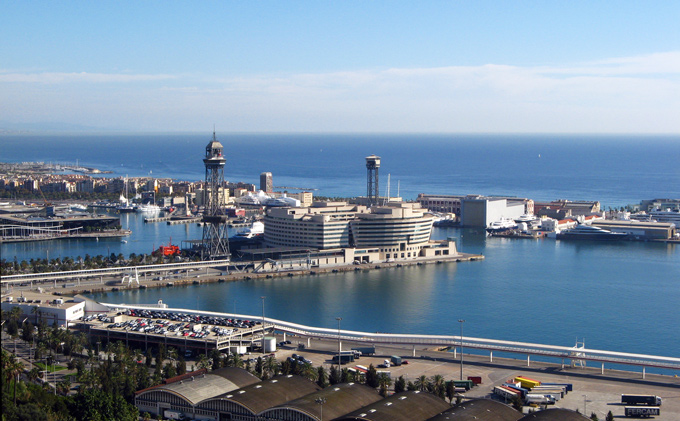
Meandering downhill, we found scenic overlooks of the city. In this one, the Torre Agbar building is the most prominent structure:
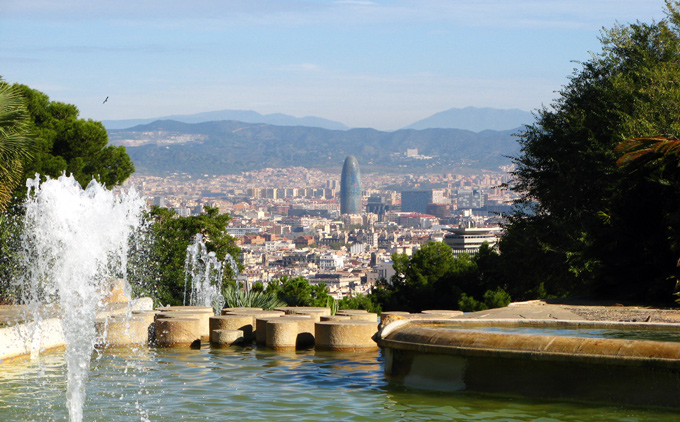
This cutting-edge building has two modern features: automatically operated window blinds for temperature control and LED devices on the outside for nighttime illumination. We are not sure which causes the effect but, in daytime, the building has an unattractive “bombed-out” look!
Nearing the bottom of Montjuic, we reached the Palau Nacional, constructed for the 1929 World Expo. As this Internet photo shows, it is an imposing building with its approach lined by cascading waterfalls:
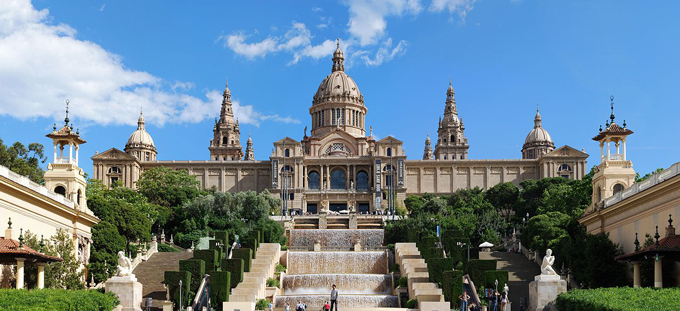
Its huge dome room was the prime ceremony room and dancehall for the Expo:
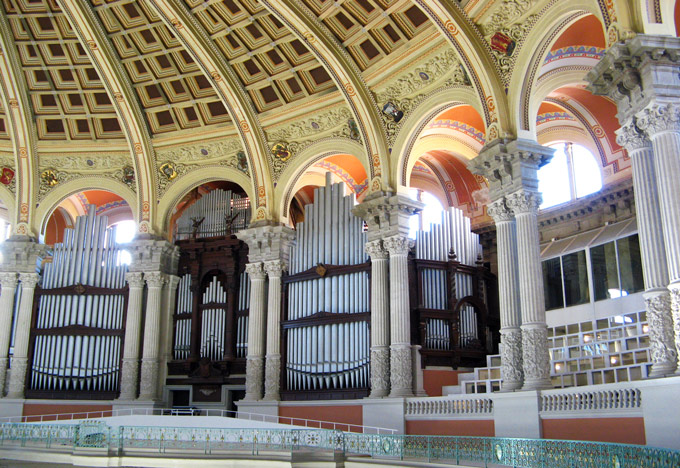
(Sorry I could not show more but scaffolding limited photo opportunities.) Since 1934 the Palau Nacional has been home to the National Art Museum of Catalunya and it continues to be a well cared for edifice:
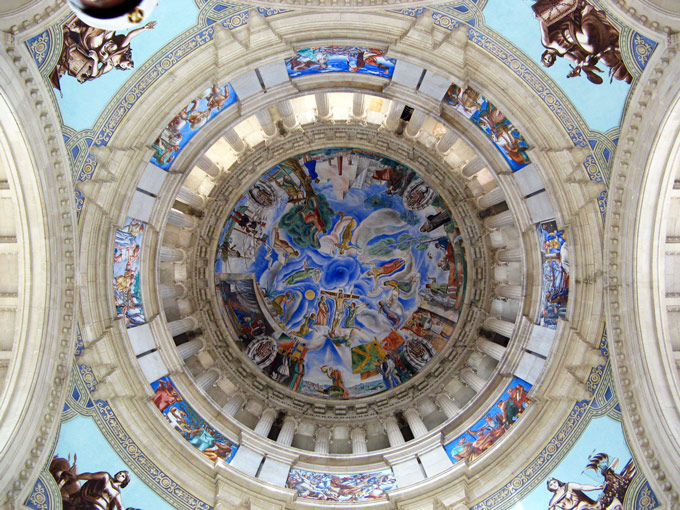
From the Museum’s front balcony, there is a marvelous vantage point:
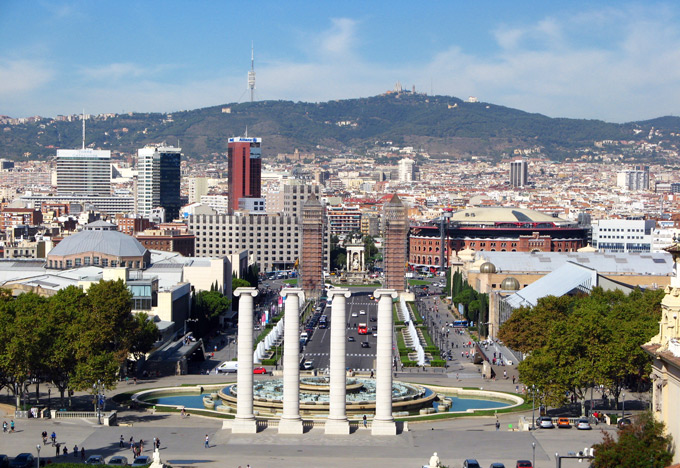
Beyond the four prominent columns is the so-called Magic Fountain, the nightly performances of which we somehow managed to miss. The avenue ahead leads past two scaffolded pylons to Plaça d’Espanya. Just to the right is the Arena Mall, a converted bull fighting arena. (Since 2012, bull fighting has been banned in Catalunya, a significant departure from the rest of Spain.) In the distance is Mount Tibidabo, the city’s highest peak.
From several points in the city, it was obvious that Tibidabo was crowned with a significant structure. It turns out that that structure is the neo-Gothic Sacred Heart Church, shown in the scanned post card below:
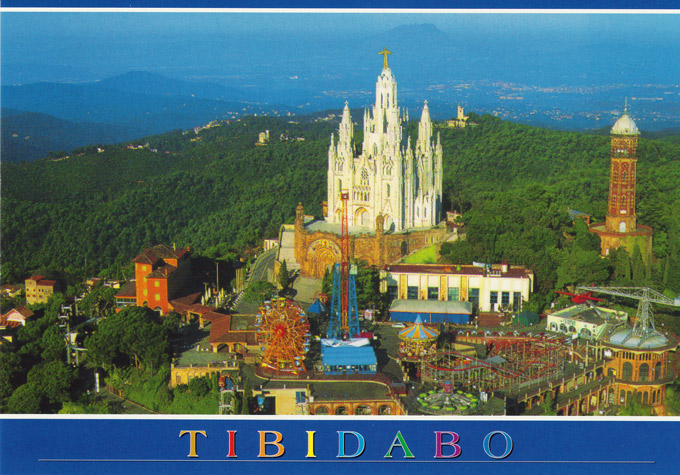
Incongruously, perhaps, the church is surrounded by an amusement park which predates the church. We did not reach Tibidabo’s summit but, maybe next time ...
The last two photos were taken from the top of the Arena Mall, looking back toward the Palau Nacional building:
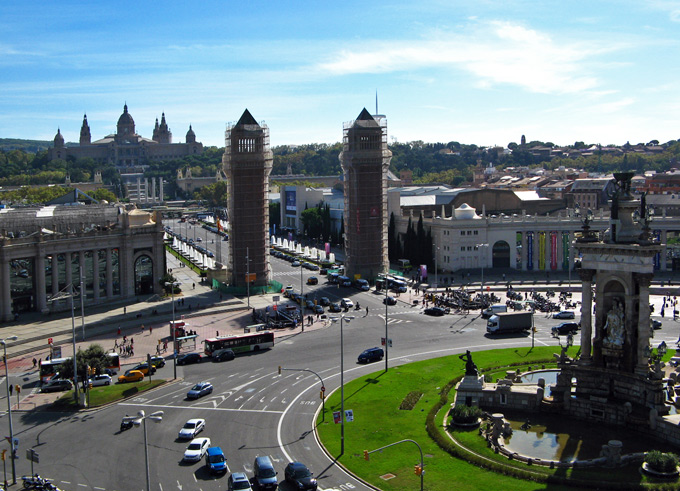
Plaça d’Espanya is in the foreground. The pylons marked the main entry to the 1929 World Expo.
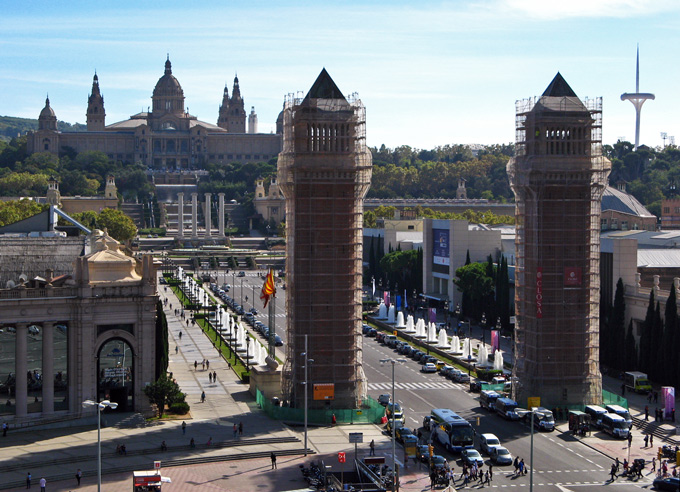
Above, an observant eye might notice the “exclamation mark” outlined against the sky on the right. This is the Montjuic Communications Tower, built to transmit TV coverage of the 1992 Summer Olympic Games in Barcelona. The 446 ft tower is said to represent an athlete holding the Olympic Flame ... in case anyone wondered.






































